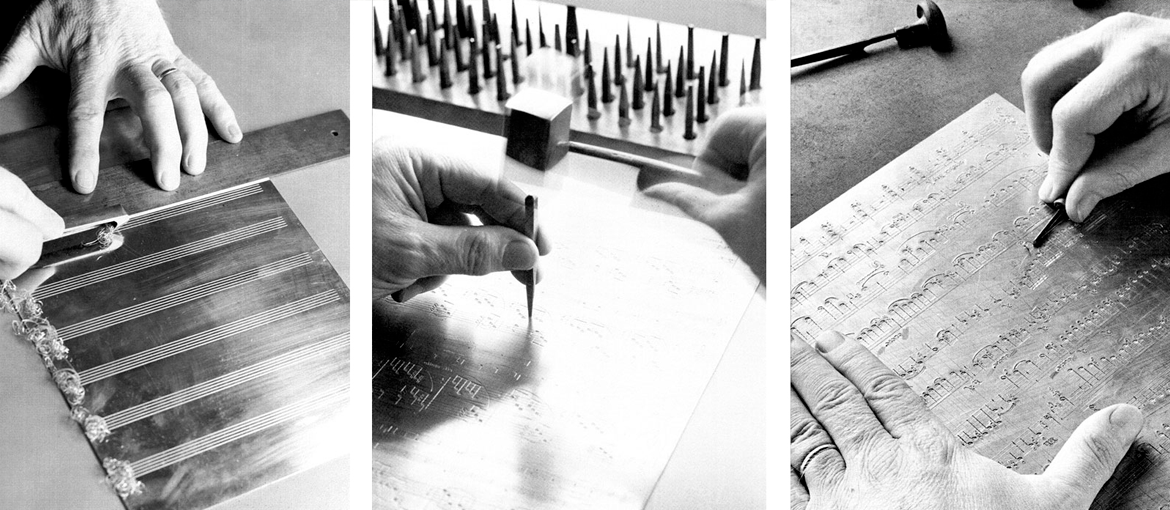Table of Contents
When we talk about the “history of printing”, we usually mean the history of the printed word. However, at the same time that words were being printed, so was another system of notation: music. Text and musical score printing developed in parallel, sharing technologies and breakthroughs. But publishing music in printed form presents its own set of challenges, which have, at times, led to evolutionary divergence.
We look at the milestones on this journey, which has seen musical notation invented and re-invented more than once, developing from a few simple instructions on how to enunciate the verses of a song into a complex system for providing precise information on notes, pitch, rhythm and more for an entire orchestra.
Antiquity: the precursors of modern musical scores
The first forms of musical notation date to before paper and parchment were used for writing. The very first form of notation was discovered on a cuneiform tablet created in Babylonia (modern-day Iraq), in around 2000 BC. Forms of musical notation were also common in Ancient Greece, from at least the 6th century BC, with symbols placed above the syllables of hymns to aid correct intonation.
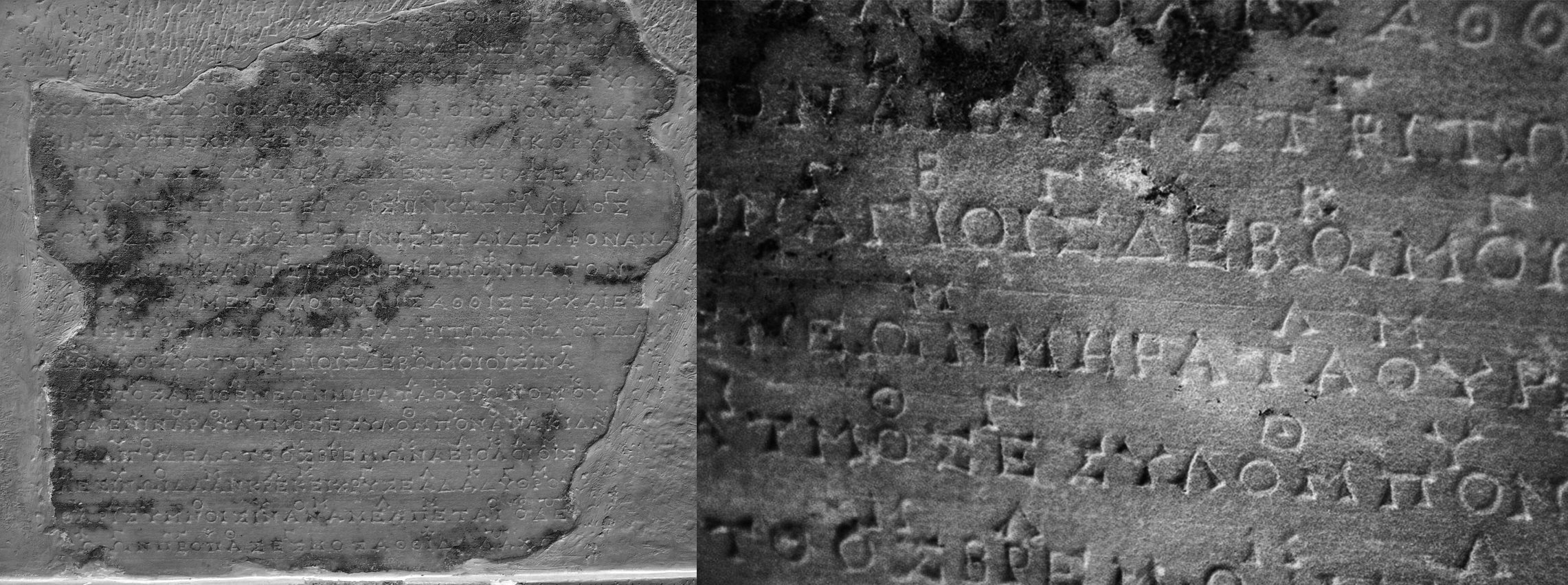
The Middle Ages: music on illuminated codices
Modern musical notation, with the systematic adoption of the tetragram (later replaced by the pentagram), was invented by Guido of Arezzo around the year 1000. Although music would continue to be passed down orally for many years to come, in the abbeys, music began to be transcribed by hand, with painstaking care, onto illuminated codices, accompanied
by sumptuous illustrations and decorations.
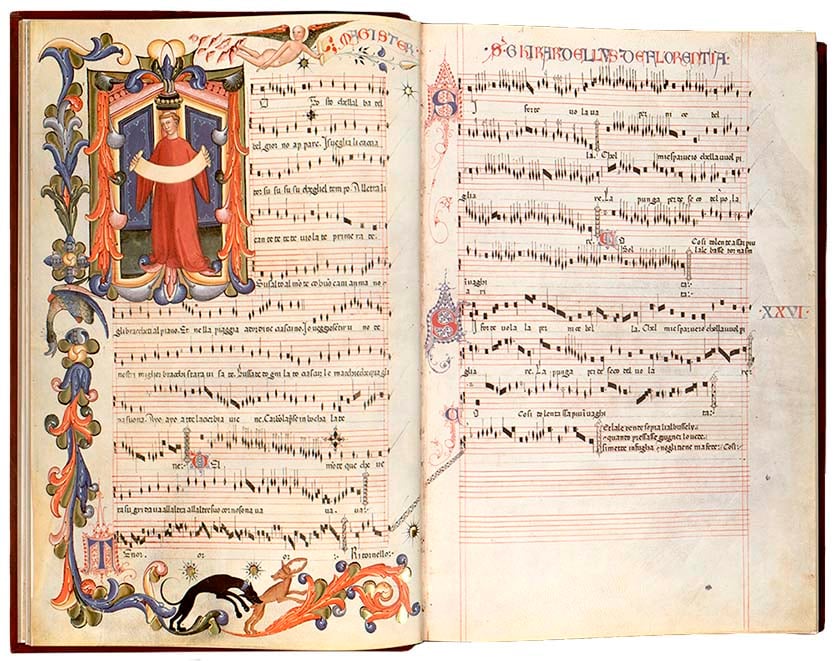
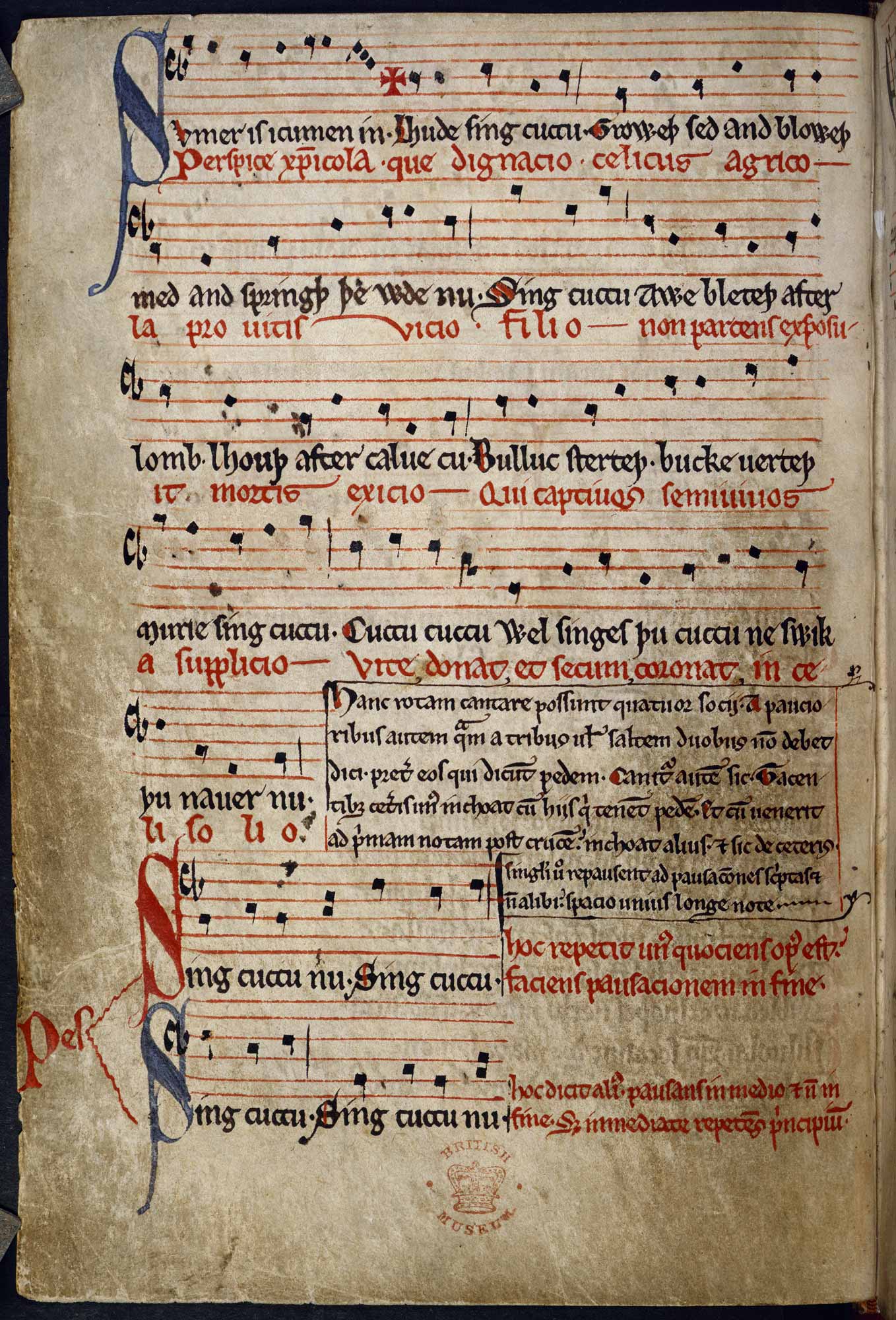
Movable type printing: Ottaviano Petrucci and John Rastell
With the invention of movable type printing in the 15th century, printing became the most common method for producing and disseminating texts, but music continued to be distributed on handwritten codices. This was partly down to the lack of a common standard for musical notation, but above due to the technical difficulty in combining and aligning musical staves (lines) and notes, as well as any text. Sometimes, staves were added by hand before or after the music was printed; others, staves were printed first, then scribes added notes and text by hand afterwards.
Ottaviano Petrucci, one of the most innovative music printers of the late 15th and early 16th centuries, adopted a system that printed staves, text and notes in three successive steps. The results were clean and elegant, but the process was too long and difficult – precisely aligning the three required great skill – for large-scale reproduction. In 1520, Englishman John Rastell created a different system in which staves, words and notes were all part of a single piece of type, meaning only one print run was necessary. This method was preferred to Petrucci’s, even though the results were less precise, and it soon spread throughout Europe, where it became the standard until the adoption of plate engraving, in the 17th century.
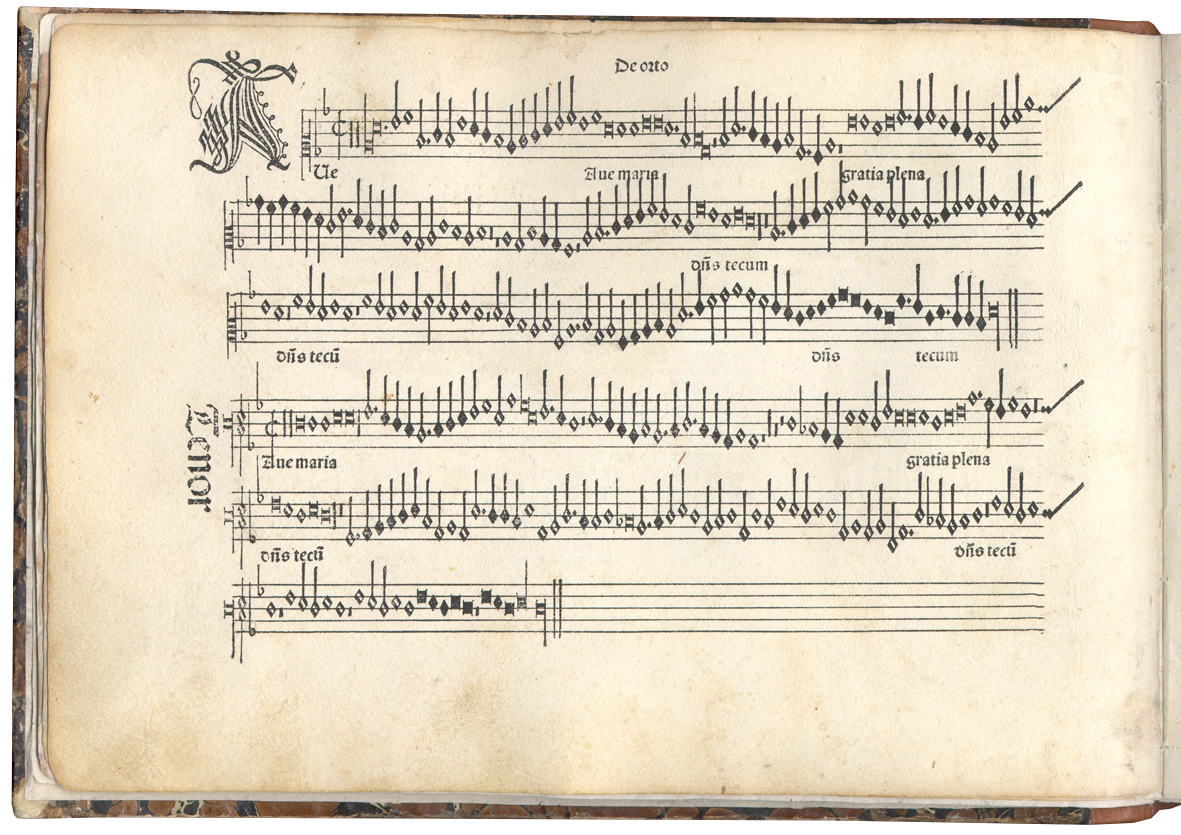
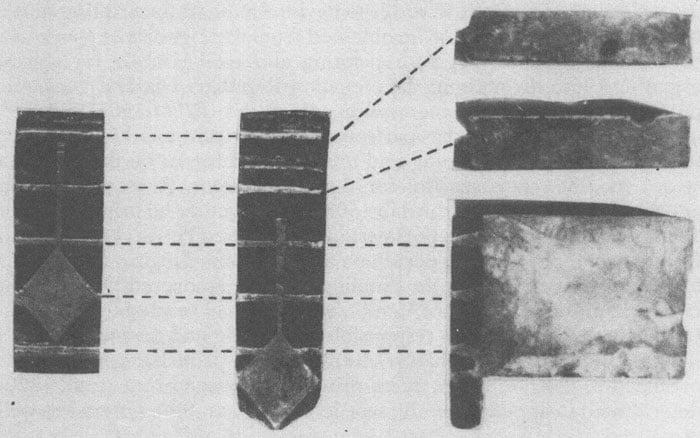
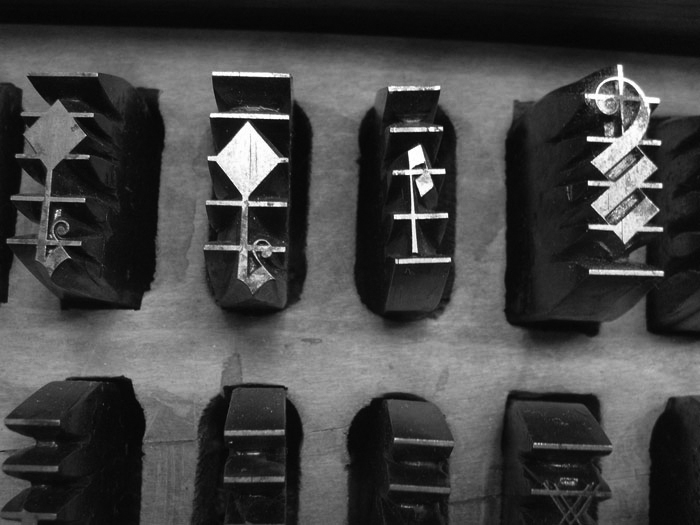
Plate engraving: the most commonly used method until modern times
The limitations of movable type lay in their static nature, which prevented the reproduction of many hand-written details. So printers turned to other printing techniques, such as engraving. This process involved engraving staves, notes and text directly onto a plate, which was then inked and printed onto paper. It gave extremely high quality results, which is why some music publishers, like the venerable G. Henle Verlag, continued to engrave scores by hand right up to the turn of the millennium.
Initially, plates were engraved free-hand. Later, special tools were created for engraving different elements.
- Chisels for engraving scores
- Elliptic burinsfor crescendo and diminuendo
- Flat burins for ledger lines
- Punches for notes, keys, accidentals and letters
Plate engraving was the method of choice for printing scores until the end of the 19th century, when the development of photographic technology led to its decline.

Handwriting: the importance of hand notation
Advances in score printing led to the standardisation of musical notation symbols, leaving little room for the inevitable variations that arose from hand transcription. However, composers continued to write their music by hand, before giving it to a copyist, and then a printer for publishing.
With the spread of the engraving printing method, manuscript paper with pre-printed staves on which to write notes became common. In the 20th century, manuscript paper was often printed on tracing paper or tissue paper, which made it easier for the composer to read through and correct and their work, as well as making it possible to reproduce the music in several copies through a process of photographic exposure. If the paper used was matt, on the other hand, it had to have a fine texture so that the ink didn’t expand. And ink was always black.

Computers and scores: music notation software
Like virtually every other process, computers have revolutionised the way music is written and scores produced. There is now music notation software (like Finale or Sibelius) which, not unlike a word processor, allows you to type, edit and print scores. Music notation software makes various things easier, including making corrections, extracting parts for the orchestra, transposing music for different instruments, changing the key of a piece, and many more tasks. Some software even allows you to test music through the digital reproduction of instruments, which gives you an idea of how the score will sound when played on a real instrument.
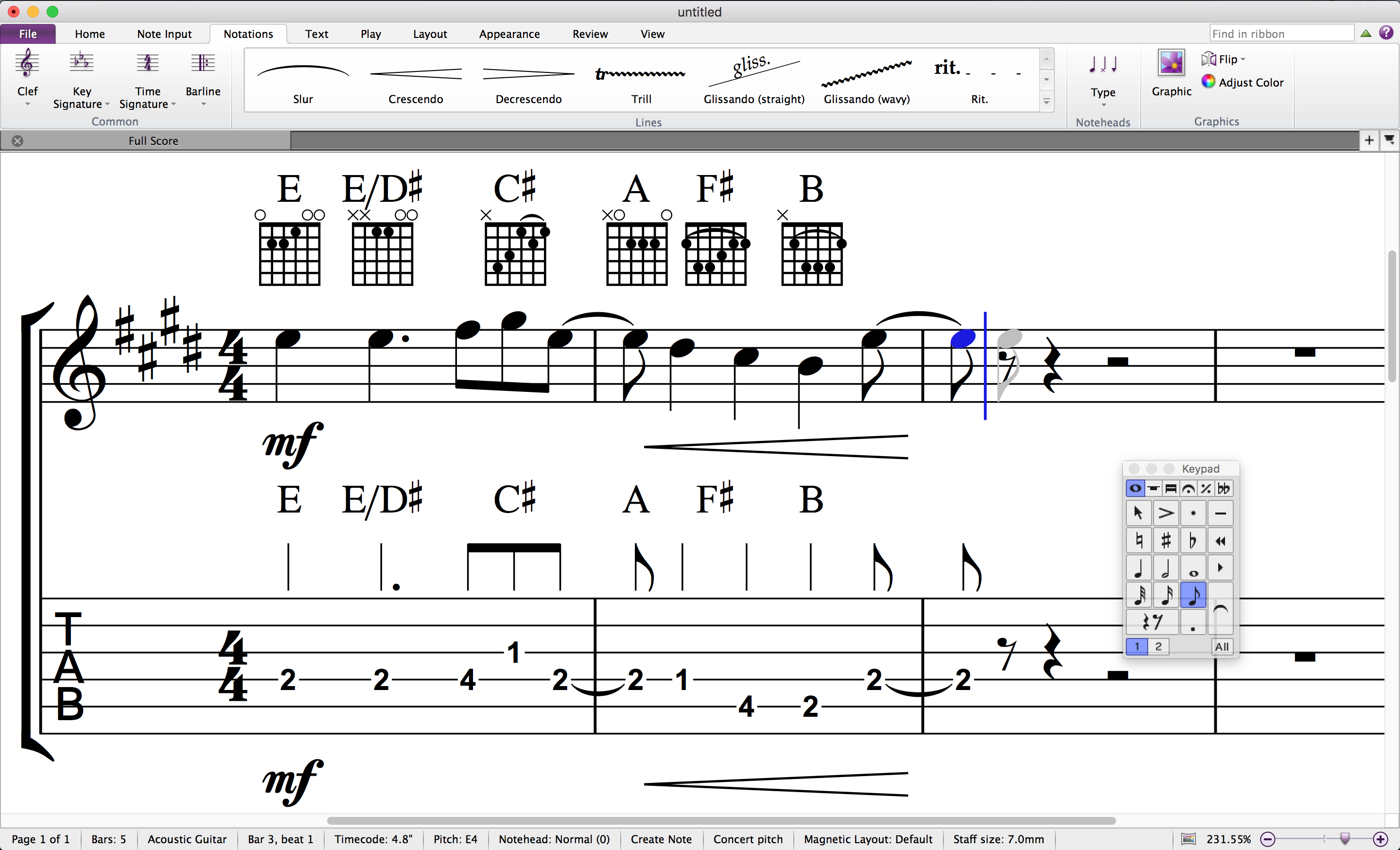
Various ways for representing music continue to evolve: some are alternatives, while others are complimentary methods for specific instruments. For example, there are pictograms for wind instruments that indicate which holes to cover, while percussion instruments, which don’t produce notes with a precise tone, also have their own special systems. Alternative forms of notation also exist for the guitar, one of the most commonly played instruments today.
The standardisation of musical notation in the form of scores was a major leap forward in Western musical education. For centuries, printing has sought to mechanically reproduce musical notation as precisely as possible, a process which ultimately made the standardisation of this complex system possible.

